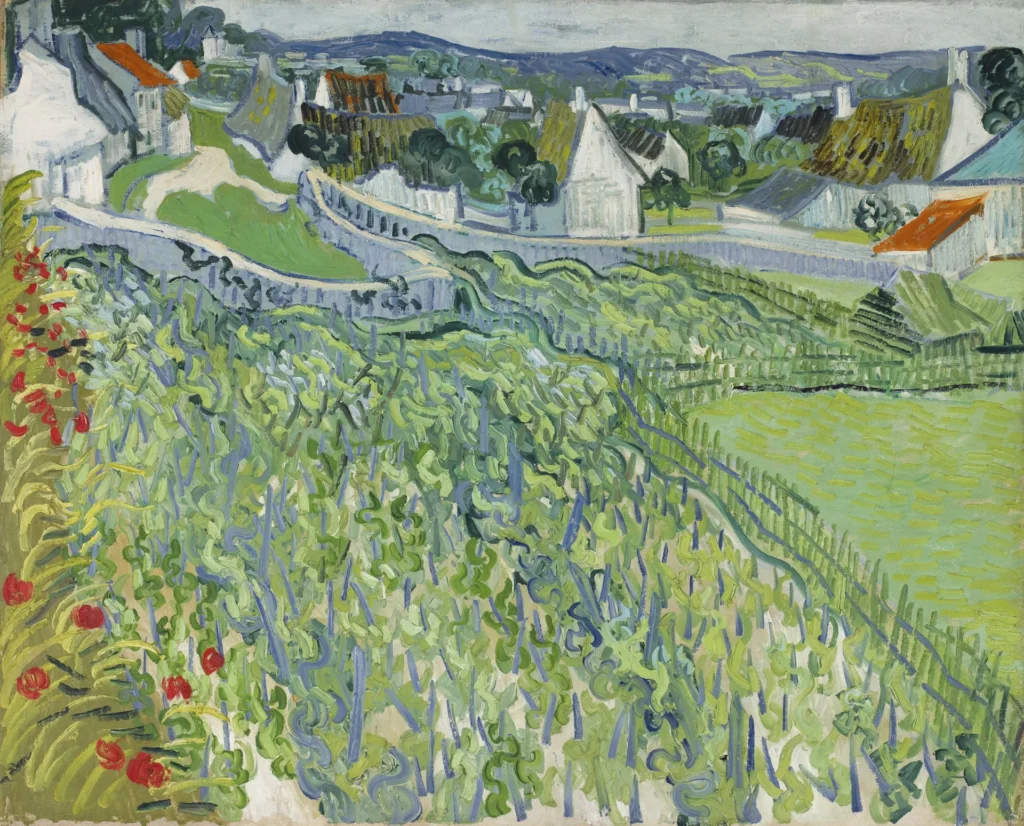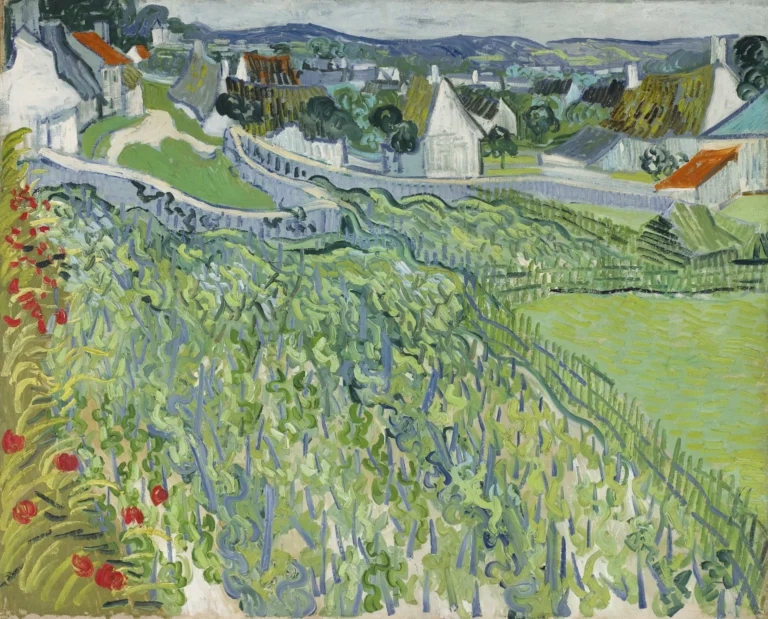Vineyards At Auvers (1890)
This stunning oil on canvas painting, measuring 65.1 cm by 80.3 cm, showcases Van Gogh's unique approach to landscape art. Set in Auvers-sur-Oise, where he spent the last months of his life, the piece depicts grapevines interwoven with striking red poppies and characteristic red roofs in the background. The energetic brushwork captures the essence of the idyllic French countryside and Van Gogh's emotional connection to the landscape. The painting is currently housed at the Saint Louis Art Museum, demonstrating its esteemed place in art history.
June 1890
About the Artwork
In June 1890, Vincent van Gogh painted Vineyards At Auvers during a tumultuous period of his life as he sought solace in the beauty of the French countryside. This artwork not only reflects his artistic innovation but also symbolizes his turbulent emotional state. The twisting grapevines and vibrant colors reveal his deep appreciation for nature while also hinting at the chaos he felt within. As this was one of his final works, it carries poignant significance, embodying both his struggle and his creative genius. The provenance of the painting traces a fascinating journey through various hands after Van Gogh's death, highlighting its value and importance.
Did You Know
Liked what you see? Add it to your collection.
Enjoyed reading? Share it.
... continued
Date and Location
The painting was created in June 1890, during Van Gogh's stay in Auvers-sur-Oise, a village just north of Paris, where he spent the last two months of his life.
Style and Genre
The painting is characteristic of Van Gogh's Post-Impressionist style, featuring heavily loaded brushstrokes and vibrant colors. It falls under the genre of landscape painting.
Composition
The painting depicts twisted forms of grapevines, red poppies, and red roofs in the distance, capturing the scenic view of Auvers-sur-Oise. The composition is animated by the dynamic brushwork typical of Van Gogh's style.
Medium and Dimensions
The painting is executed in oil on canvas, measuring 65.1 cm by 80.3 cm (25.6 inches by 31.6 inches).
Current Location
The painting is part of the collection at the Saint Louis Art Museum, where it is currently on display in Gallery 218. It was acquired through funds given by Mrs. Mark C. Steinberg.
Provenance
After Van Gogh's death, the painting passed through several owners, including his brother Theo van Gogh, Johanna van Gogh-Bonger, Paul Cassirer Gallery, Hugo von Tschudi, and eventually the Paul Rosenberg Gallery before being acquired by the Saint Louis Art Museum.










